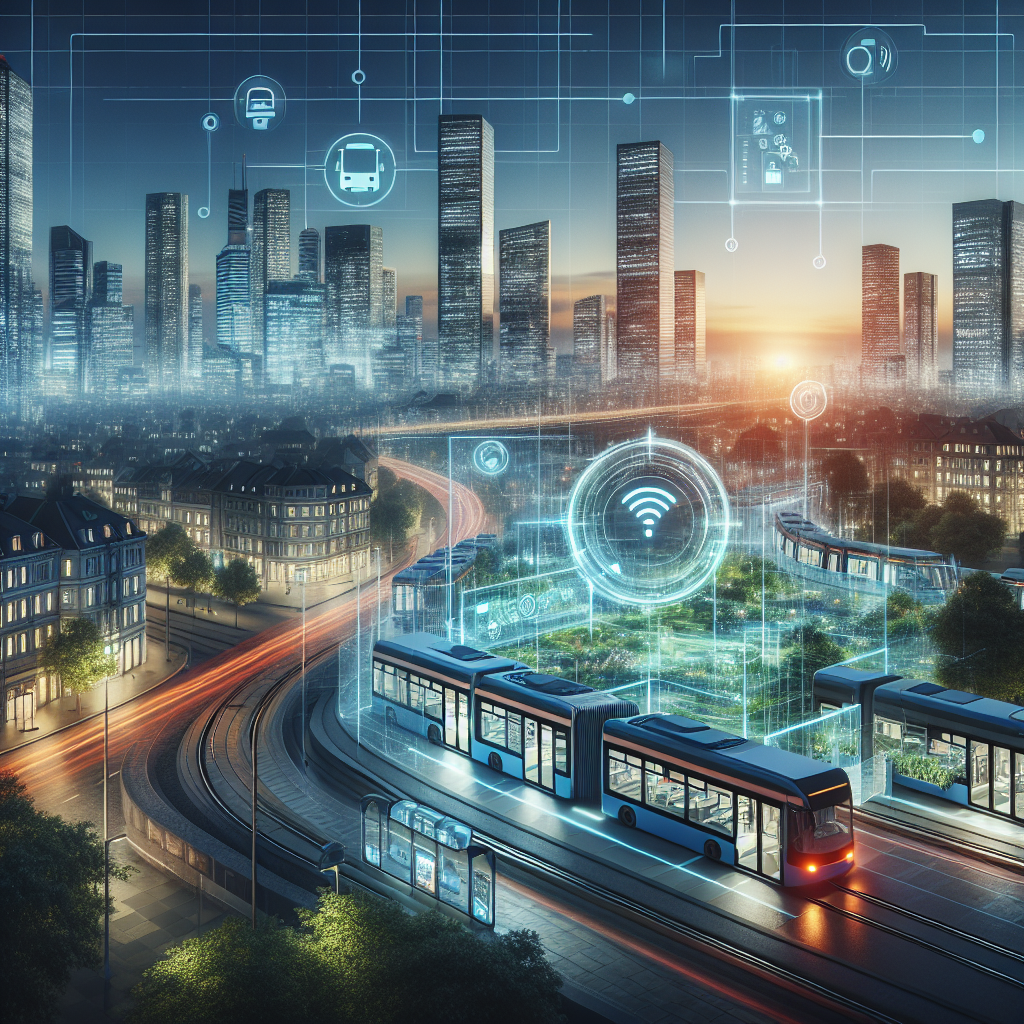Artificial Intelligence (AI) has revolutionized many industries in recent years, and public transport is no exception. By leveraging AI technologies, public transport systems can improve efficiency, reduce congestion, and increase sustainability. From optimizing routes to predicting passenger demand, AI is transforming the way public transport operates.
Improving Efficiency
One of the key ways AI is improving public transport efficiency is through route optimization. By analyzing data on passenger demand, traffic patterns, and other variables, AI algorithms can suggest the most efficient routes for buses, trains, and other forms of public transport. This can help reduce travel times, minimize congestion, and improve the overall passenger experience.
AI can also help public transport systems better manage their fleets. By using predictive maintenance algorithms, for example, transport operators can identify potential issues with vehicles before they occur, reducing the likelihood of breakdowns and delays. This not only improves the reliability of public transport services but also helps reduce maintenance costs.
Additionally, AI can be used to optimize scheduling and staffing for public transport systems. By analyzing historical data on passenger flows and other factors, AI algorithms can suggest the most efficient schedules for buses, trains, and other services. This can help reduce wait times for passengers and ensure that services are running at maximum capacity.
Increasing Sustainability
In addition to improving efficiency, AI can also help make public transport more sustainable. By optimizing routes and schedules, public transport systems can reduce fuel consumption and emissions, leading to a more environmentally friendly operation. AI can also be used to promote the use of electric vehicles and other clean technologies, further reducing the carbon footprint of public transport services.
AI can also help public transport systems better manage their resources. By analyzing data on passenger demand and other factors, AI algorithms can suggest ways to reduce waste and improve resource utilization. This can help public transport operators reduce costs and improve the overall sustainability of their services.
Furthermore, AI can be used to promote the use of alternative modes of transport, such as cycling and walking. By analyzing data on traffic patterns and other variables, AI algorithms can suggest ways to encourage people to use these modes of transport instead of driving. This can help reduce congestion, improve air quality, and promote a healthier and more sustainable urban environment.
FAQs
Q: How does AI help improve public transport efficiency?
A: AI can help improve public transport efficiency in a number of ways, including route optimization, fleet management, and scheduling. By analyzing data on passenger demand, traffic patterns, and other variables, AI algorithms can suggest the most efficient routes for buses, trains, and other forms of public transport. This can help reduce travel times, minimize congestion, and improve the overall passenger experience.
Q: How does AI help make public transport more sustainable?
A: AI can help make public transport more sustainable by optimizing routes and schedules, reducing fuel consumption and emissions, and promoting the use of clean technologies. By analyzing data on passenger demand and other factors, AI algorithms can suggest ways to reduce waste and improve resource utilization. This can help public transport operators reduce costs and improve the overall sustainability of their services.
Q: How can AI promote the use of alternative modes of transport?
A: AI can promote the use of alternative modes of transport, such as cycling and walking, by analyzing data on traffic patterns and other variables. By suggesting ways to encourage people to use these modes of transport instead of driving, AI algorithms can help reduce congestion, improve air quality, and promote a healthier and more sustainable urban environment.
In conclusion, AI is transforming public transport by improving efficiency, reducing congestion, and increasing sustainability. By leveraging AI technologies, public transport systems can optimize routes, manage fleets, and promote the use of alternative modes of transport. As AI continues to advance, the potential for further improvements in public transport efficiency and sustainability is vast.

